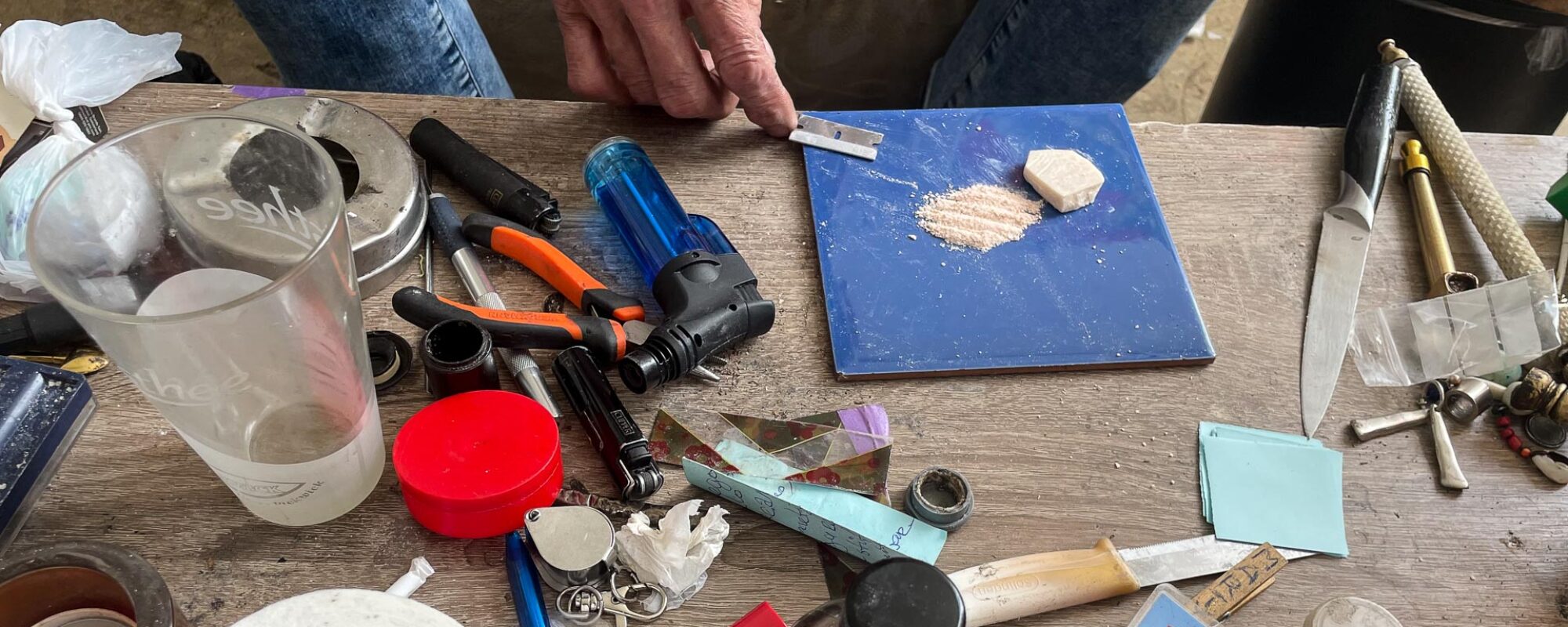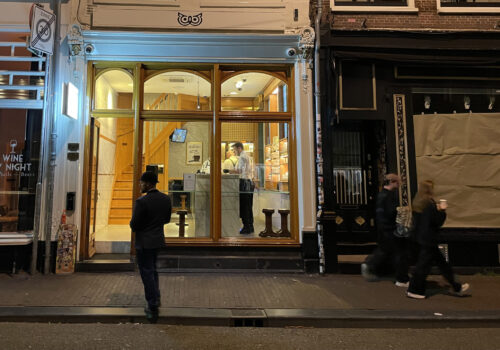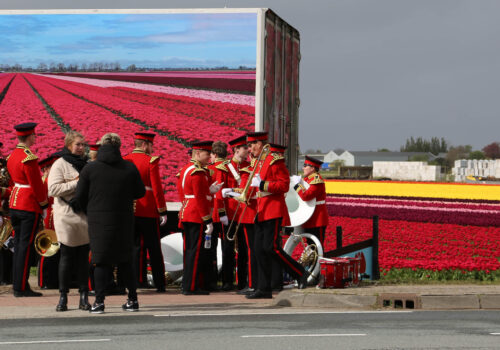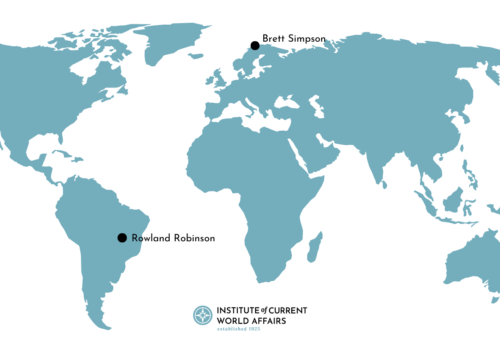AMSTERDAM — “Do you know about My Lai?” the American asked. I responded that I did. “That was my company.” He looked down at the table and lit a mixture of pure pink crack cocaine—locally known as base coke—and 80-proof rum on a blue ceramic tile. As the substance turned into liquid and the flames subsided, he spread the mixture like butter and cut it until it took a powdered form. Using a demitasse spoon-sized golden shovel, he put the pink powder into an elegant white pipe and took a long hit using a mini blow torch.
Alex, not his real name, arrived in Amsterdam in 1969 after fighting in Vietnam as one of the 101st Airborne Screaming Eagles. He never left and preferred to speak Dutch rather than English when I met him with Has Cornelissen—a veteran street outreach worker—at a rundown long-term housing shelter on the outskirts of the city. When he arrived over five decades ago, he brought with him the heroin habit he had formed in Vietnam, although now he prefers base coke. Along with disenchanted hippies, Surinamese migrants fleeing independence and fellow American Vietnam veterans, Alex’s arrival helped set off an explosion of demand for heroin that wouldn’t diminish until the AIDS epidemic of the 1980s and last into the 21st century.
It would take the Dutch more than three decades of pragmatic integrative public health policies led by local activists and municipalities to curb the deadly heroin epidemic and revitalize neighborhoods sometimes overrun by street users and dealers. Their methods put aside questions about the morality of drug use and focused instead on approaches that prioritized the social integration of people who use heroin into society rather than strict clinical recovery from addiction.
The process required medical as well as non-medical responses. I’ll focus here on medical interventions including methadone maintenance and the use of drug consumption rooms, and look at non-medical methods such as housing and employment in a later dispatch.
Crucially, drug use is not illegal in the Netherlands, which means that even though production, sale and possession are illegal, people who use drugs can always ask for help without fear of criminal prosecution. In the United States, by contrast, the criminalization of drug use discourages many from asking for and receiving help.
The history
Before one can understand how the Dutch were able to solve their late 20th-century opioid crisis, however, one must first start in the 17th century. Taking a trip back in time, I made my way aft on the lower deck of the East Indiaman Amsterdam docked at the National Maritime Museum as the wooden planks creaked underneath my feet. I walked by replicas of crates used to transport opium from the 1600s to the 1900s across the Dutch colonial empire. As late as 1906, opium sales provided 16 percent of tax revenues for the Dutch colonies.
The famous Dutch East India Company (VOC) was the world’s first joint stock company and for a time the most profitable in the world. After trading opium in Java—present day Indonesia—as early as 1617, in 1678 it forced the Sultan of Mataram to grant the company a monopoly on the product. Opium use grew exponentially in the decades that the VOC controlled the supply; its opium revenues dwarfed those of all other commodities traded in the Indonesian archipelago.
After the collapse of the VOC in the late 18th century, Dutch Governor-General Herman Daendels instituted the Opium Regie in 1808, putting the monopoly under formal state control. The government argued that by controlling import, production and distribution, it could curb abuse, reduce dependency and combat smuggling.
In 1909, the Netherlands joined the United States and China in negotiating the first treaty that established the international drug control regime we know today. At the same time, Dutch and German pharmaceutical companies legally produced and distributed morphine, heroin and cocaine until around World War II. In 1928, the Dutch Chemical Factory Narden traded half the opium in the entire world. It would legally sell to companies in surrounding countries that would turn around and sell it on without a license.
Neither the Maritime Museum, with its focus on trade, nor the nearby National Rijks Museum, with a role in shaping the national narrative, give any inkling of this profitable commodity that helped fuel the Dutch Golden Age, its part in supporting the Netherlands’ far-flung empire or the role it played well into the last century. With the exception of an excellent exhibition at the Nationaal Farmaceutisch Museum, I found it very difficult to find public information on the topic without digging into academic literature and books.
The Dutch were not alone in benefiting from opium. The Americans John Jacob Astor as well as Warren Delano, grandfather of President Franklin Delano Roosevelt, bolstered multi-generational fortunes selling opium to China. George Orwell’s father worked for the powerful British Opium Department in India, which produced significant revenues for the colonial government.
Being aware of that history is critical today because it demonstrates that the current international, national and local criminalization of psychoactive substances other than alcohol, tobacco and coffee is a relatively recent choice that has not always been the norm.
While opium use was prevalent in the Dutch colonies, it’s unclear how widespread its use was in the metropole. In the 1900s, opium was available at pharmacies, and opium dens in Amsterdam and Rotterdam’s Chinatowns were tolerated by police as long as non-Chinese were excluded. In the 1960s, Amsterdam counted maybe a few hundred opium users, but that soon changed.

The crisis
In 1971, Ronnie Pieterman died of a heroin overdose in the Amsterdam’s historic Jordaan district, signaling the start of the heroin epidemic. By 1975, it’s believed there were more than 4,000 heroin users. At the height of the epidemic in 1983, there were 30,000 to 35,000 heroin users across the country of 14.5 million—0.24 percent of the population.
Today in the Netherlands, there are about 10,000 to 14,000 problematic heroin users across the country of 17.7 million—0.07 percent of the population. In comparison, as the United States grapples with its own opioid epidemic, it’s estimated that in 2020, some 2.7 million people, 0.80 percent of the American population, had opioid use disorder.
As demand in the Netherlands rose, so did the price per gram of heroin, which drove a five-fold increase in crime between 1970 and 1985 as users stole to support their habit. It being the Netherlands, most of the offenses were bicycle thefts.
A confluence of factors led to the exponential rise of heroin use. On the demand side, American GIs like Alex brought their heroin habits with them when stationed at American bases in the Netherlands or seeking refuge from the culture wars at home. Concurrently, around 150,000 Surinamese representing around half of Surinam’s population migrated to the Netherlands in the years after independence in 1975. Disadvantaged men from those two migrant groups comingled with disenchanted local youths disappointed by the failure of the flower power movement of the ’60s.
The convergence coincided with an economic crisis that gripped the Netherlands throughout the 1970s. The country had one of Europe’s lowest growth rates, with unemployment reaching 8.5 percent in 1982. The struggles were compounded by a rapidly changing housing market, with prices soaring over 70 percent between 1970 and 1978 before precipitously crashing back to 1970 prices in 1982. Economic depression tends to increase substance use and the Netherlands was no exception. Alcohol consumption tripled between 1960 and 1980. However, the rise in the use of heroin had to do with another major change, this time on the supply side.
In the 1970s, the American, French and Turkish authorities dismantled “The French Connection” smuggling scheme, which had supplied 75 percent of America’s heroin through the French city of Marseille using Turkish and Indochinese suppliers. Looking for a new logistical node, smugglers chose Rotterdam and Amsterdam because of their global reach. That made heroin easier than ever to get as cultural changes and economic depression wracked the country. Heroin convictions quadrupled from 1971 to 1975, and between 1972 and 1973 alone, the amount of heroin apprehended by police checks rose 800 percent from 2.3 kilograms to 19 kilograms.
As I explored in my last dispatch, the rising crisis led to a 1976 compromise that amended the Opium Act, effectively decriminalizing cannabis while increasing penalties for heroin possession. Those who were implicated in trafficking heroin could be imprisoned for eight years, while those who imported or exported it could be sentenced to 12 years. However, low-level dealers and users were usually given a fine or put in jail for only a few weeks or months. In 1980, 85 percent of prison sentences were for six months or less.
The same year, the general prison population came to 23 per 100,000 people compared to 130 per 100,000 in the early 2000s, or the US rate of 355 per 100,000 today. The low ratio and short sentences seem to have been partly due to a lack of prison space. Convicts were put on waiting lists until capacity arose. In real terms, that meant the best police could generally do was push users from one neighborhood to another—angering residents everywhere.
While the sentences may seem light to Americans, the Dutch view of prison at the time was imbued with a particular meaning: During World War II, many people who had taken part in the resistance against the Nazis were jailed. The experience of ordinary citizens and leading politicians alike later enabled them to relate to people who used illegal drugs and lived in fear of authority, which had a moderating impact on what was considered acceptable punishment.
Furthermore, criminal records can be cleared after 5 years, and drug charges do not always show up on criminal background checks in any case, allowing those convicted of crimes related to drugs to have an easier time entering the workforce and re-integrating into society. In the United States, a criminal record even for a misdemeanor lasts a lifetime and usually bars access to jobs outside a limited number of blue-collar vocations.
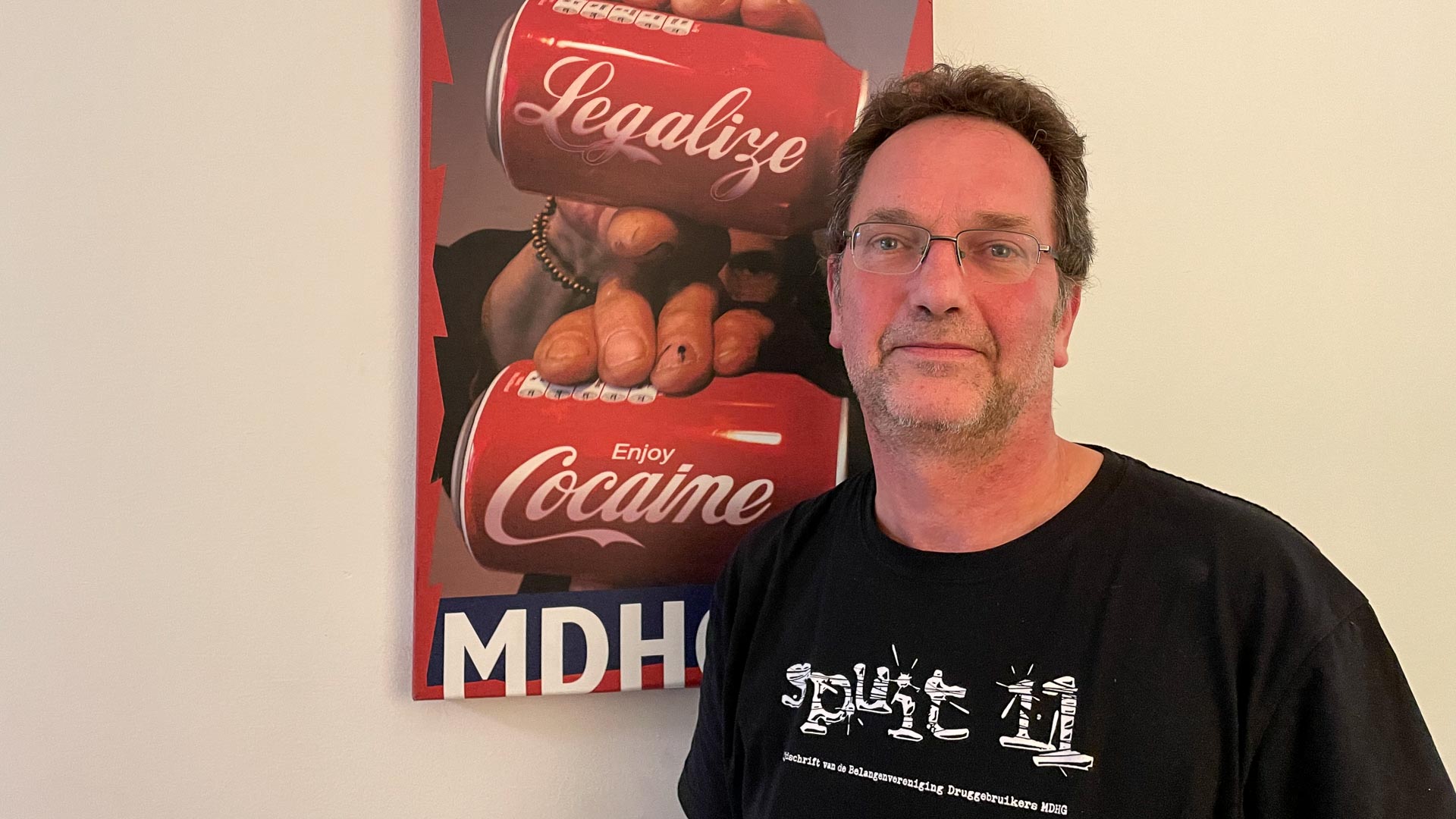
Community solutions: harm reduction
While the national government did not change its abstinence-oriented policies until 1985, in the 1970s, hard-hit municipalities facing the crisis firsthand learned to ignore country-wide advisories and implemented more pragmatic measures negotiated with users and neighbors. Unable and unwilling to imprison people out of sight and out of mind, politicians had to deal with the situation in other ways. Harm reduction initiatives were found to be the most effective way of not just reducing harm but—very important to the fastidious Dutch—maintaining their beloved public order.
August De Loor is one of the local advocates credited with changing how Amsterdam, and consequently the Netherlands, responded to the exponential rise of heroin use. As the hope of the ’60s turned into the nightmare of the ’70s, the government responded with what August derisively calls the “two strike” policy: police and rehab clinics. “It always needs more money because it’s not the answer,” he told me. “Meanwhile, heroin use became bigger because they have no feel for the subculture driving the use.”
As a street outreach worker then and now, August sees his role as “building a bridge between the reality of young people in need and society and responsible institutes.” In 1977, he helped found MDHG, Amsterdam’s self-proclaimed “Junkie Union,” to give voice to users who bounced between the police who criminalized them and addiction clinics that treated them by separating them from the surrounding society. Such methods are particularly detrimental for ethnic minorities like the Surinamese migrants because the clinics and police are usually predominantly white, forming barriers in understanding and care.
MDHG’s board is split in half between street outreach professionals and street users. Together they formed a “third way” based on the understanding that problematic heroin use is society’s issue to solve. “So, we brought in the junkies,” August said. “That was the revolution.” Like disability rights advocates, MDGH’s members believe no policy should be made about subjects without their input.
Dennis Lahey, MDHG’s current executive director, explained how the idea of needle exchanges now known across the world as a best practice started in the Netherlands after an injecting heroin user proposed the idea because he didn’t like when other users left needles in school playgrounds.
MDHG and similar organizations across the Netherlands advocated among policymakers and negotiated with neighbors over how best to solve the crisis. Over the next three decades, their efforts would lead to widespread access to low-barrier methadone maintenance, syringe exchange programs, methadone in prisons, naloxone in ambulances, free drug testing, drug consumption rooms and heroin-assisted treatment, among others. The victories for heroin users were hard-fought. As I’ve explained in previous dispatches, the Dutch do not view drug use positively or indifferently. People had to die and residents had to be convinced of the benefits for their own neighborhoods before the new ideas were implemented.
“Our drug programs make the users visible,” August explained. “You can see them in the coffee shop, you can see them in the methadone programs, you see them in the needle exchange programs, you see them in programs where there is a safe place where they can use, you see? So you make the drug, the use of drugs, you make it visible. And the more visible you make it, the more you have control over the problems.”
By the 1990s, it’s estimated that 65 percent to 85 percent of heroin users were in contact with treatment or harm-reduction services. Studies have repeatedly demonstrated that the implementation of such policies does not increase drug use but rather improves individual health and lowers fatal overdoses all while reducing public nuisance.
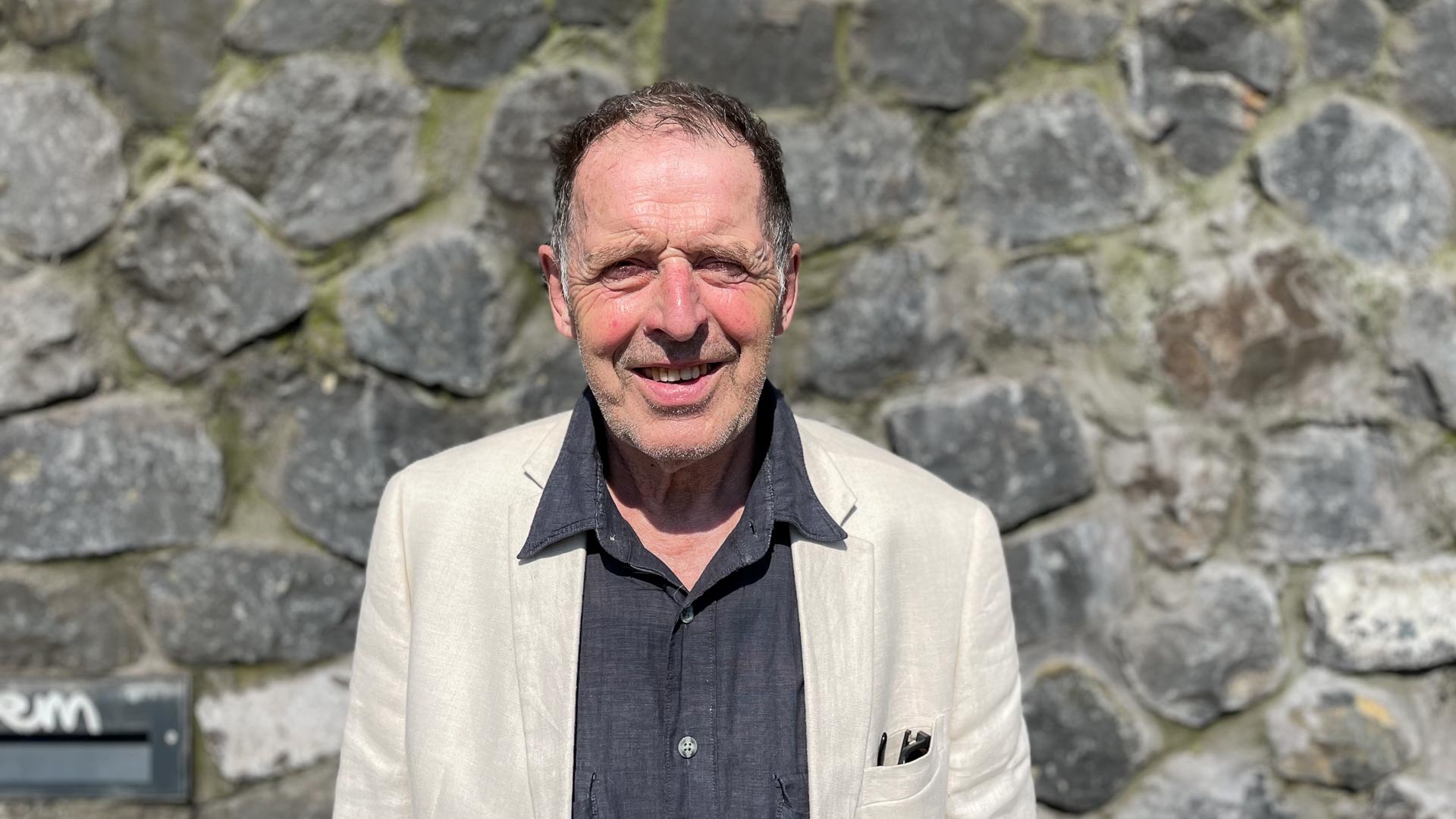
Methadone for everyone
In 1968, methadone was introduced in the Netherlands for the treatment of people addicted to morphine. In 1972, methadone began being used to also treat the growing number of heroin users. The national government initially took a very restrictive approach, directing methadone to be used as treatment leading to detoxification and abstinence. However, studies found that most people who stopped taking methadone ended up using street heroin again, so the policy shifted to lifetime methadone maintenance.
In the early days of the epidemic, methadone was directly prescribed by doctors and picked up at pharmacies like any other prescription. Between 1975 and 1980, doctor-prescribed methadone increased a hundredfold. However, public complaints arose about chaos at pharmacies with fake prescriptions and pushy patients, which led to methadone being given out at special facilities. The first low-barrier methadone program was established in the city of Arnhem in 1974.
As late as 1978, Amsterdam’s main rehab clinic, Jellineck, prescribed only 134 methadone maintenance prescriptions even though there were estimated to be close to 9,000 addicts in the city at the time. The same year, a newly minted methadone bus program registered 637 clients. Its two buses would crisscross the city to reach six designated stops. At each location, users were given methadone and harm-reduction toolkits including needles if they asked for them. That approach was put in place because neighborhood opposition initially prevented brick-and-mortar locations.
Initially, methadone programs gave out low doses of 30 to 60 milligrams at a time, which patients would simply top off with street heroin. Upping the doses to 80 or 150 milligrams made patients less likely to develop cravings and use illegal opiates, which in turn reduced the street market demand for heroin.
Within a few years, access to the low-barrier methadone maintenance programs increased dramatically. Numerous brick-and-mortar locations grew to serve 50 percent to 65 percent of the total number of problematic heroin users. Patients did not have to quit other drug use to participate, they were not drug tested, were not forced to partake in psychotherapy, and methadone dosages were negotiated with the patients. As their lives stabilized, they were able to take methadone prescriptions home for up to a week. Although low-barrier access meant patients were not required to participate in any prescribed activities, many still had access to psychosocial, budgeting and housing services if they wanted.
The goal of methadone maintenance programs is to create conditions for enabling patients to effectively partake in non-drug related activities and re-integrate into society. In the United States by comparison, methadone clinics require drug testing and strict daily attendance that have earned them the name of “liquid chains.” Today, only 14 percent of illicit opioid users are on a methadone maintenance program in any given year.
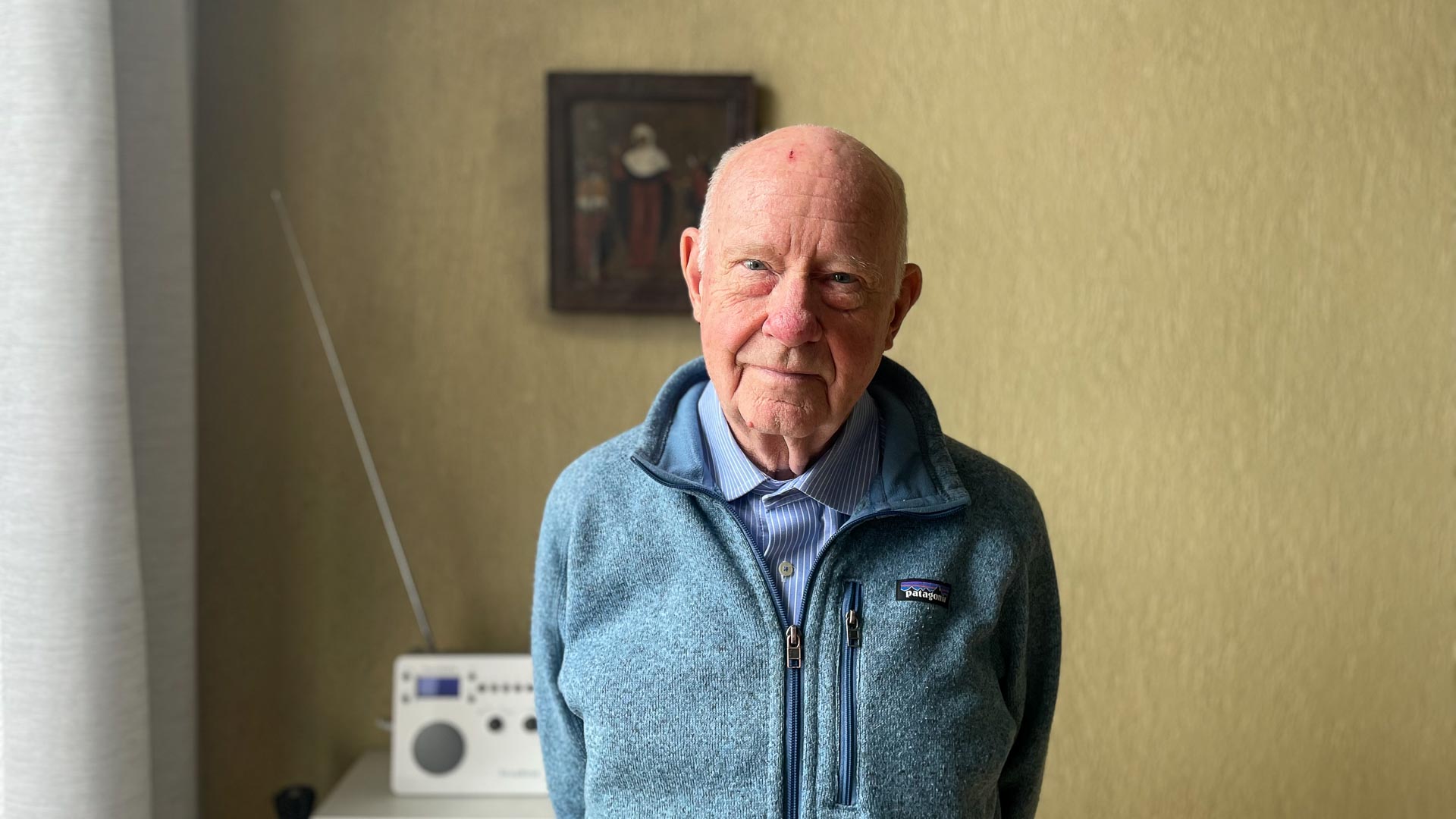
AIDS’ impact on heroin use and culture
The arrival of AIDS and the HIV epidemic in the early 1980s increased the adoption of public health measures and stabilized the prevalence of heroin use by turning the culture around heroin upside down. “The culture around heroin was a little bit like Robin Hood in a way,” August said. “I’m a junkie, I’m an anarchist, f*ck society. But all of a sudden, the pink cloud was associated with death. That was one of the biggest influences in our society.”
AIDS turbocharged advocates’ demand for syringe service programs (SSP) in which injecting drug users could get clean needles in exchange for old ones. The first SSP opened in 1984. AIDS also helped influence more heroin users to smoke using individual pipes rather than inject heroin with shared needles, which reduces the risk of transmitting diseases and overdoses.
The confluence of public health measures and AIDS helped contain the number of heroin users, which peaked in 1984 with 30,000 users nationwide. The number remained steady until 2010, after which it started to drop.
Drug consumption rooms
While heroin use leveled off, large and medium-size cities were still plagued by open drug use that caused public disturbances. The introduction of base coke—crack cocaine—around 1989 didn’t help. Many heroin users added it to their regimens, making their behavior more erratic and increasing petty crime by poorer users. To quell disturbances and reinvigorate downtown areas, the Dutch piloted officially sanctioned integrated drug consumption rooms (DCRs) in 1994 for base coke and heroin, and heroin assisted treatment (HAT) programs in 1998.
People smoke or inject opioids and stimulants in the DCRs. Later, some would include areas for drinking as described in my first dispatch. For the most part, DCRs are incorporated into daily activity facilities. A typical one I visited in Rotterdam, frequented by around 30 users a day, is considered one of the country’s busiest. It included an empty injection room, a busy smoke room where users mostly did base coke, a gym, dining room where meals could be bought for 1.50 euros, a place to shower and wash clothes and a computer room.
The set up creates space for drug users away from the streets and night shelters where they can build a sense of community. One person I met no longer used drugs but had come back to be with his friends. The nearby park was notably clean and free of open drug use.
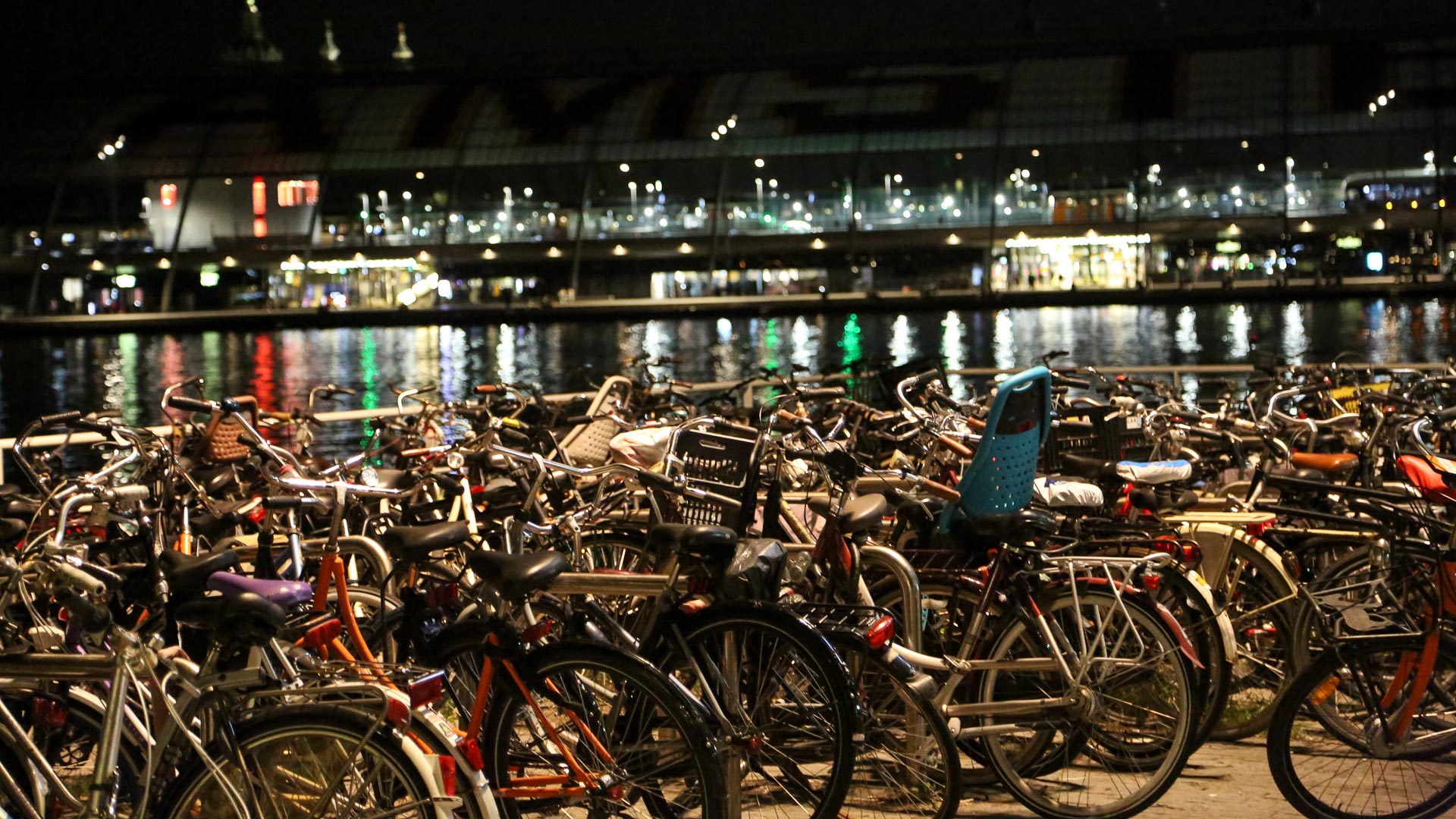
Heroin assisted treatment programs
Wim van der Brink arrived in Amsterdam in the early 1990s to join the faculty at the Amsterdam University Medical Center as a professor of addiction care. It turned out to be a turning point in his life and the Netherlands’ when he was soon charged with opening the first heroin assisted treatment program in the country. The idea had been floated in the 1980s after positive reports from Liverpool, but it wasn’t until Switzerland’s successful pilot that the Netherlands was willing to try its own.
The goal is to target people at high risk to themselves and the public order. With 60 percent of those taking part doing well, the most problematic people were taken off the streets. “It’s a relatively small number,” Wim told me, “but it’s the most problematic in terms of health and public nuisance.”
When Wim was setting up the first HAT pilot, he asked future study participants what type of wrap-around services they wanted. The top request was budgeting assistance, housing services and facilities with daily activities. “They don’t believe in recovery in the sense that they become wonderful people by psychotherapy,” he told me. “After 20 years on the street, they’re not moving easily into a job.” His team also found that when provided with social housing, patients tended to voluntarily stay home and watch TV. With their main needs met, they had little interest in roaming the streets.
Unlike methadone maintenance, for which anyone can sign up, access to HAT is severely restricted. Opioid users must have failed methadone treatment and are forced to come to the facility for their doses and use them inside two to three times a day—similar to methadone programs in the United States.
From what I understand, however, patients are not drug tested and can continue to take base coke, cannabis and other drugs. Many HAT participants choose to simultaneously use methadone in addition to heroin to reduce cravings and enable them to sometimes miss their third appointments.
Wim believes the tight controls requiring attendance multiple times a day are too restrictive, and that programs should allow take-home doses for trusted patients. That’s particularly necessarily for older heroin users in their 60s or 70s with comorbidities such as dementia. In Switzerland during Covid-19, patients were allowed prolonged take-home for up to seven days with positive effects. Loosening restrictions would also enable more people who have or want employment to participate.
Today’s trends
Nationwide, the number of methadone treatment centers in 2022 was down to 70 from 82 in 2013. That seems primarily due to patients dying rather than leaving the program. The number of heroin assisted treatment clinics has remained consistent for the past decade—around 17 in the country—although the number of users is also decreasing. Furthermore, there are over 17 drug consumption rooms operating in the Netherlands today, and over 29 syringe service programs. All that for a population about equivalent to the state of New York’s but living on only a third of the landmass.
The overall number of people who use heroin in the Netherlands today is low. The official number is estimated at around 10,000 to 14,000—less than half the 1980s peak—and equivalent to .07 percent of the population. Users’ age also goes up an average 10 months every year, meaning they are aging with few new addicts replacing them.
Wim estimates that 60 percent of today’s heroin users are on methadone and a few receive buprenorphine, 5 percent to 8 percent are on HAT, 10 percent partake in some kind of 12-step abstinence program, and 20 percent get by on their own without treatment.
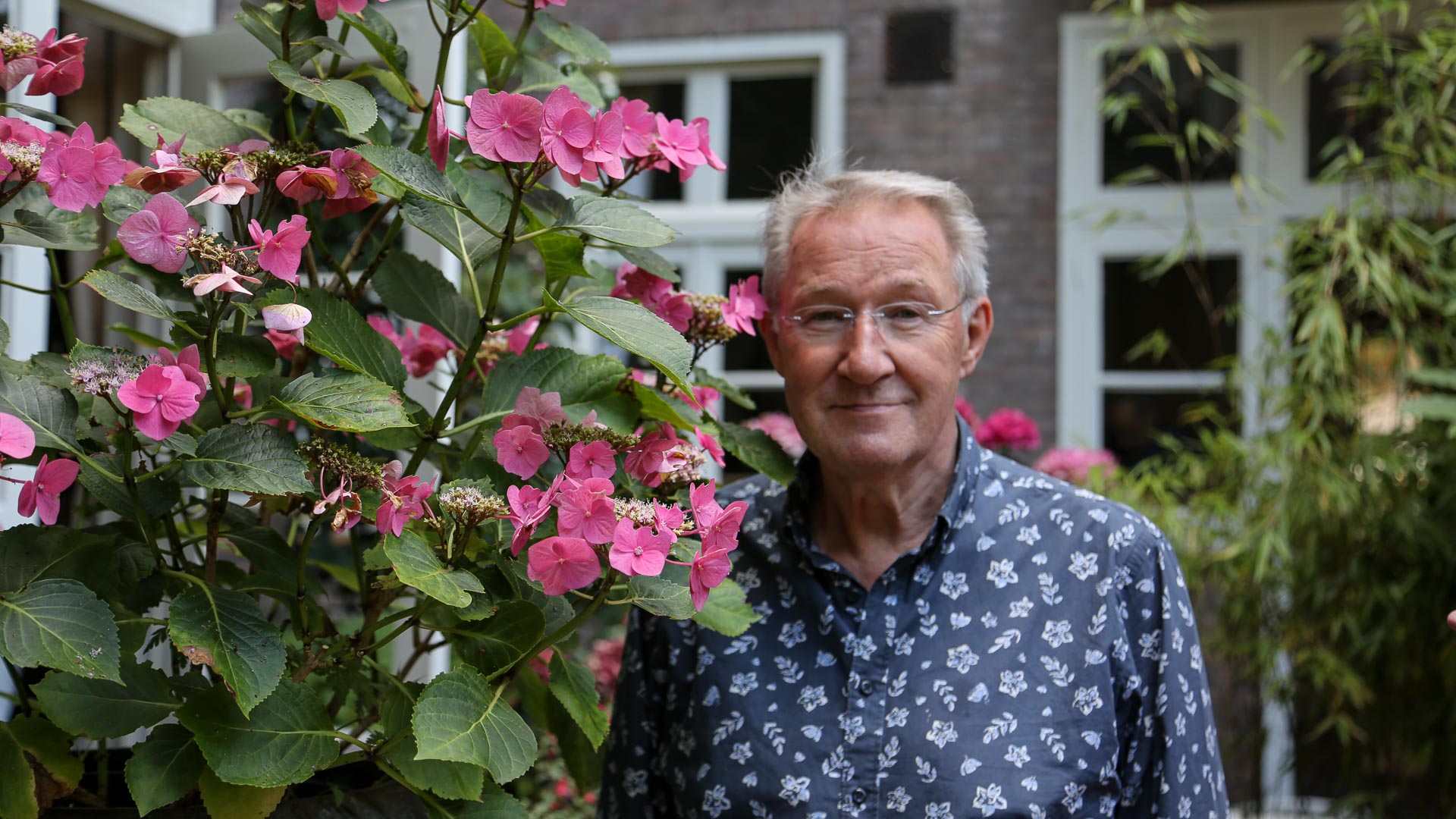
One group that may not be fully counted in these statistics is the growing number of Eastern Europeans who primarily come to the country as cheap labor. A minority bring with them injecting drug habits formed in their home countries. They operate in the shadows of the system I described, which tends to be reserved for Dutch or European residents only. A couple non-profits serve such migrants but they did not respond to my requests for interviews or visits to their sites.
The greatest concern facing heroin users and the myriad public health and non-profits that serve them is the destruction of the supply of Afghan heroin by the Taliban that used to supply all of Europe. Like the dismantling of the French Connection in the 1970s, the development is leading to significant disruptions in the street drug supply. Drug monitoring non-profit organizations like Mainline are already hearing from people who use heroin that the street quality has plummeted and prices have doubled in the past month alone.
The fear keeping people up at night in the Netherlands and across Europe is that the hole left by the lack of Afghan heroin will be supplanted by synthetic opioids like fentanyl rather than another source of heroin. Synthetic opioids are easier for drug crime syndicates to produce because making them in labs requires a fraction of the cost and time it would take them to harvest heroin in the fields. They can also be made more potent, which means smaller quantities, easier transportation and smuggling.
In a call I attended with public health officials from across Europe to coordinate over the topic, I learned that synthetic opioids had already appeared in Ireland and were expected to spread further. Some 860,000 Europeans use opioids across the continent, encompassing 0.3 percent of the population—about a third less than in the United States.
Given the limited number of problematic heroin users and a robust public health apparatus left over from their heroin crisis, the Dutch are worried but confident in their ability to tackle the problem as it arises. Still, since arriving in country earlier this year, I have continually heard from advocates and the organizations in charge of implementing the programs about budget cuts at the national and municipal levels. Private philanthropic funding also seems to be drying up. How the cuts will play out as the threat from synthetic opioids grows will have to be seen.
It’s clear that low-barrier access to methadone maintenance, syringe service programs, drug consumption rooms and heroin assisted treatment program—among a wide array of smaller harm reduction measure—effectively neutralized many of the negative consequences of the steep rise in heroin use. They reduced harm to people who use the drug by reducing the risk of blood-born infections, stabilized their opioid cravings so they could live normal lives, and reduced the number of overdoses. They also increased public safety through integrated drug consumption rooms and social housing that got users off the streets. The programs cost Dutch taxpayers less than what Americans pay today as problematic users in the United States bounce between expensive EMS, hospitals and prisons with few prospects for reintegrating into society.
While I couldn’t find hard statistics, based on my interviews, it became clear that a significant number of people who used heroin at the height of the crisis were migrants from Surinam, America and other places. That’s worth noting because it’s often falsely assumed that the Netherlands put harm reduction programs in place faster than other countries because the population using drugs and the policymakers were primarily of the same ethnicity or same cultural background—that was not the case.
Compare that to the state of Maine, which is 94 percent white yet continues to prioritize incarceration over public health and consistently leads the country in overdose deaths per capita. Most Dutch, by contrast, believe that while not a commendable habit, using hard drugs does not negate a person’s basic human rights or place in society.
Top photo: Table of “Alex,” an American Vietnam veteran who was part of the migration wave that led to the spike in heroin use in the 1970s and 1980s. The drug on the table is “base coke” or crack cocaine

